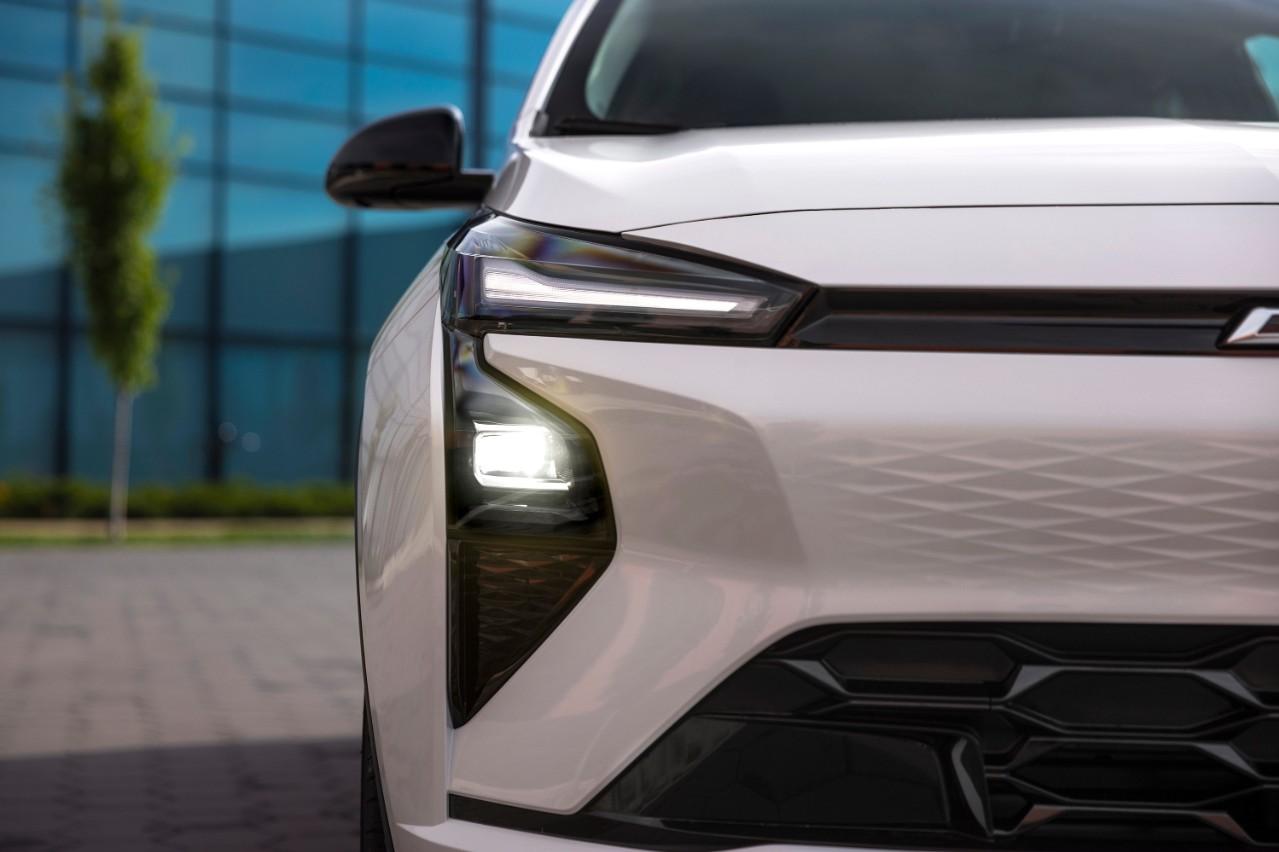
The front corner of the newly announced 2027 Chevrolet Bolt. (Image: General Motors)
The abrupt shift in federal electrification policy notwithstanding, two key stakeholders in the United States auto industry, General Motors and Ford, just signaled their support for electric vehicles (EVs) in the strongest way possible. Despite loss of the $7,500 EV tax credit, both automakers recently announced new billion-dollar investments to produce more EVs. In a complementary movement, the EV charging station industry also ramped up activity this year.
General Motors makes an offer that’s difficult to refuse
General Motors (GM) currently ranks No. 2 in domestic EV sales behind industry leader Tesla, thanks in part to a strong performance by its midsized Equinox electric SUV. In a gentle poke at Tesla and other EV-only startups, GM promoted its position as a legacy automaker, emphasizing that its customers can choose conventional gas-powered vehicles over the near term, even as the auto industry continues a long term transition to full electrification.
Earlier this year GM leaned towards the gas-powered side with the announcement of a new $888 million investment in its New York plant to produce its next-generation V-8 engine. But this summer, the company announced a new two-year, $4 billion plan that supports both gas and electric vehicles.
“We're focused on giving customers choice and offering a broad range of vehicles they love,” Mary Barra,GM Chair and CEO, said in a statement.
“GM’s Buick, Cadillac, Chevrolet, and GMC brands offer a broad portfolio of innovative gasoline-powered vehicles and the industry’s widest range of EVs, as we move to an all-electric future,” according to the statement.
That all-electric future came closer at the end of July, when GM affirmed it will restart production of its popular Chevrolet Bolt EV for 2027. GM introduced the compact electric car in 2017 along with an EUV (electric utility vehicle) version, but the company halted production in 2023 to concentrate on the Equinox and other larger EVs.
The falling cost of EV batteries is among the factors leading GM to update and bring back the Bolt, with a strong appeal to the affordability factor already associated with the car. The company is reportedly aiming for a target price around $30,000.
GM plans to import new low-cost lithium-iron-phosphate batteries from the leading Chinese firm CATL to accelerate its Bolt production schedule over the next two years, The Wall Street Journal reports. After that, the automaker expects to produce its own lithium-iron-phosphate batteries in the U.S.
In August, the company announced its ongoing partnership with Hyundai will bring more gas-powered and hybrid vehicles to Latin America, while also introducing a new electric van to North America as a smaller, sister vehicle to GM’s existing BrightDrop electric van.
Ford envisions a new “Model T Moment” for the 21st century
Lithium-iron-phosphate batteries are also front and center in Ford’s newly announced lineup of EVs, though the battery is just one part of a much broader cost-reduction plan. Ford has manufactured EVs and experimented around the edges of the EV movement for over 10 years, including e-bikes, e-scooters, car sharing, sustainable materials and other EV-adjacent fields. In 2022, the company took its efforts to a new level by forming a specialized team dedicated to significantly reducing the cost of manufacturing EVs in the U.S. The team soon realized that the goal required a complete re-imagining of the assembly process.
Ford announced the results of that effort on Monday. Calling it the company’s “Model T Moment,” Ford describes an all-new, modular production process that breaks the traditional single-file assembly line into a three-part series aimed at speeding up the front, rear and interior assembly processes. Ford notes that the new approach all but eliminates the physical contortions required of workers on a conventional auto assembly line.
Among other cost-reducing elements, Ford’s new EVs will require many fewer parts and much less wiring than conventional models, while the system enables the company to use the same production line for trucks, vans ands passenger cars. Ford expects the first vehicle — a midsized, four-door pickup truck targeted at approximately $30,000 — to be available in 2027.
One step backwards, two steps forward for the U.S. public charging station network
Convenient access to a public charging station is the key to accelerating EV sales. One significant step occurred in 2022, when the $5 billion National Electric Vehicle Infrastructure program launched. Funded by the Bipartisan Infrastructure Law, the program allows states to set their own priorities for installing new public fast charging stations along major transportation routes.
Many private sector stakeholders are also investing in public EV charging, including Waffle House, other popular restaurant chains, and leading truck stops and travel center operators. These businesses can prioritize their own interests while the national program ensures charging stations are available in a seamless network.
“By empowering states to build charging based on their specific needs, the National Electric Vehicle Infrastructure program helps fill in any gaps in the network,” Albert Gore, executive director of the Zero Emission Transportation Association, said in a statement.
In accord with its pullback on the electrification movement, President Trump’s administration suspended disbursement of National Electric Vehicle Infrastructure funds earlier this year. Following a series of successful challenges in court, on August 11, the Federal Highway Administration issued a guidance letter that officially restarted the program.
Alongside restoration of national funding, the fresh burst of activity in the charging station industry is a clear sign that both automakers and supply chain stakeholders are confident the vehicle electrification movement will power its way past any temporary setbacks.

Tina writes frequently for TriplePundit and other websites, with a focus on military, government and corporate sustainability, clean tech research and emerging energy technologies. She is a former Deputy Director of Public Affairs of the New York City Department of Environmental Protection, and author of books and articles on recycling and other conservation themes.














